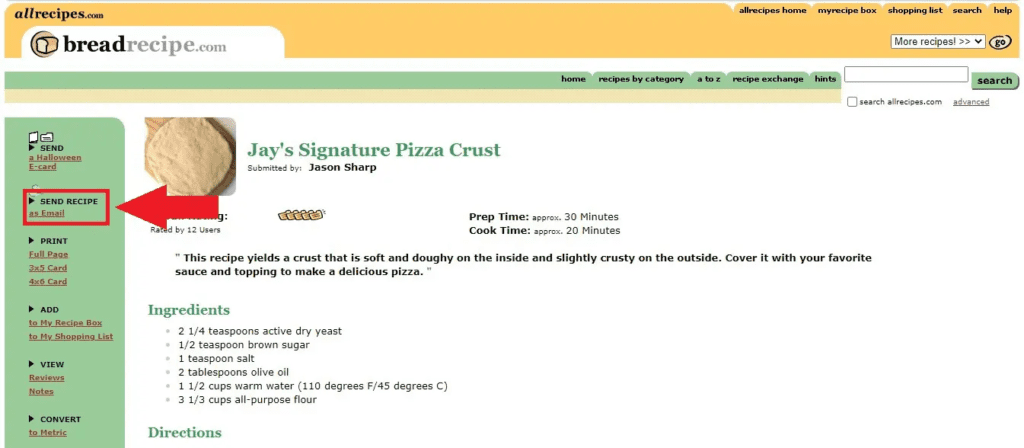|
Getting your Trinity Audio player ready...
|
Several industry insiders have predicted the rise of niche publications. “The era in which every news site covers more or less the same set of topics and stories is over,” says Pia Frey, Journalist and Co-founder of Opinary.
“The challenge now is differentiation and segmentation — the rise of the niche, if you will. The clearer the editorial profile of a particular niche, the higher the potential to build a loyal and paying audience around it.”
The future resilience of the world’s media lies in focusing on niche audiences and verticals. Its success lies in organizations that speak to very specific interests and the need for credible content.
Tshepo Tshabalala, Director, Journalism and Media Lab, University of the Witwatersrand in South Africa
85M users, 3B pages consumed annually
Allrecipes with its 85M user base who consume 3B pages annually is a great publisher to learn from when nurturing a niche audience. It started as a recipe sharing site in 1997 and has grown steadily to become the world’s largest food website.

The publisher has throughout been tightly focused on serving its users well, and quick to adapt to changing trends and technology. It started in the early days of the internet and reached close to 1M users before social media platforms like Facebook and Twitter arrived. This initial growth was driven by email as the publisher made it easy for users to share recipes using the medium.

Allrecipes was also one of the earliest publishers to have a mobile app when it launched Dinner Spinner for the iPhone in 2008. The app which helps users search for popular recipes and discover new dinner ideas was launched within a few months of the birth of Apple’s App Store. Allrecipes has shown the same alacrity in expanding to Android, Windows and Amazon’s Fire OS.

Diversified revenue stream
The publisher has continued to grow through the dot-com bubble burst and other economic crises through the years because it has always relied on a diversified revenue portfolio.
- It charges food manufacturers and grocery stores to place coupons and notices about free samples on the site.
- Generates revenue via affiliate marketing of recipe ingredients.
- Gets food related businesses as sponsors.
- Syndicates content to other sites.
- Sells kitchenware to users
All of the above have been boosted by a deep understanding of the audience. Allrecipes continuously studies its readers’ behavior to improve retention, create the right content, and acquire more sponsorships.
For example, understanding the type of recipes that become popular at specific times of the year helps the publisher predict upcoming trends and tailor content accordingly. It also studies user movements across the site to refine how it places ads, newsletter sign-up forms, sponsored recipe collections, etc. for best results.
“Next stage in its evolution”
The publisher’s focus on making life easier for its target audience led it to create a meal planning tool in 2011. That turned into a new source of revenue when Allrecipes got into programmatic advertising after being acquired by Meredith in 2012.
The next step was the addition of shoppable programmatic display ads to the meal planning section. Users could now directly add ingredients from chosen recipes to their shopping cart. Advertisers on the other hand benefited from first party data that would allow them to narrowly target readers with offers.
“To date, publishers’ way of ‘productizing’ display inventory between PMPs and the open Web was rudimentary at best,” said Chip Schenck, Meredith’s Former VP of Data & Programmatic Solutions.
Meredith’s new shoppable display platform is an example of leveraging a publisher’s unique capabilities – data, technology, talent assets, and more – to advance programmatic advertising to the next stage in its evolution.
Chip Schenck, Former VP of Data & Programmatic Solutions, Meredith
Allrecipes was also quick to leverage the ubiquity of smartphones and social media. Based on the knowledge that its audiences prefer consuming content on mobile phones, and that they are eager to share recipes, the publisher embarked on transforming into a mobile-first social platform in 2017.
It added numerous new features to the site besides making it mobile friendly. Users could link their social media accounts with Allrecipes. Each user got a personalized feed. They could follow and interact with other users, share completed recipes and so on. All of these have taken Allrecipes from being a recipe site to “a social network for food lovers.”
“Every niche brings distinct opportunities”
Transforming into a social network also helps the publisher serve highly relevant local ads to users. Brands like Target, Unilever, and Del Monte saw increase in sales, basket size, and return on investment after using hyper-local advertising on Allrecipes, according to Mobile Marketer.
High conversion rates attract more businesses to advertise on your site. Allrecipes was set to attract more advertisers from the food and consumer packaged goods space.
Automatad
“By serving highly contextual but hyper-local ads, Allrecipes strengthened its position in front of the businesses in the food category,” writes the Automatad team. “It not only helped its users but also its clients in a quantifiable manner.”
The publisher’s niche allowed it to offer unique value to its users and clients. Similarly, every niche brings distinct opportunities that have the potential to make you the best among your competitors.
Automatad
The full case study is available here.



